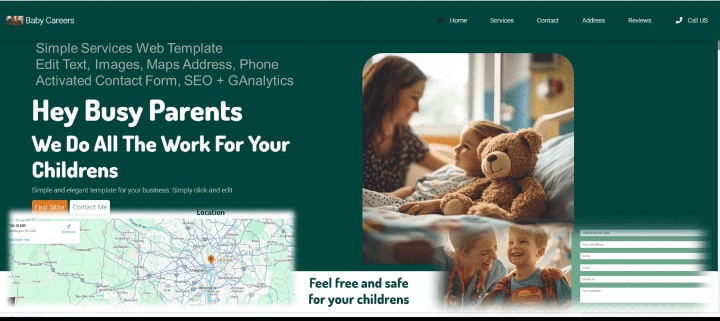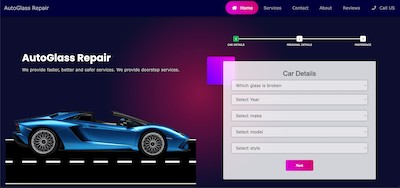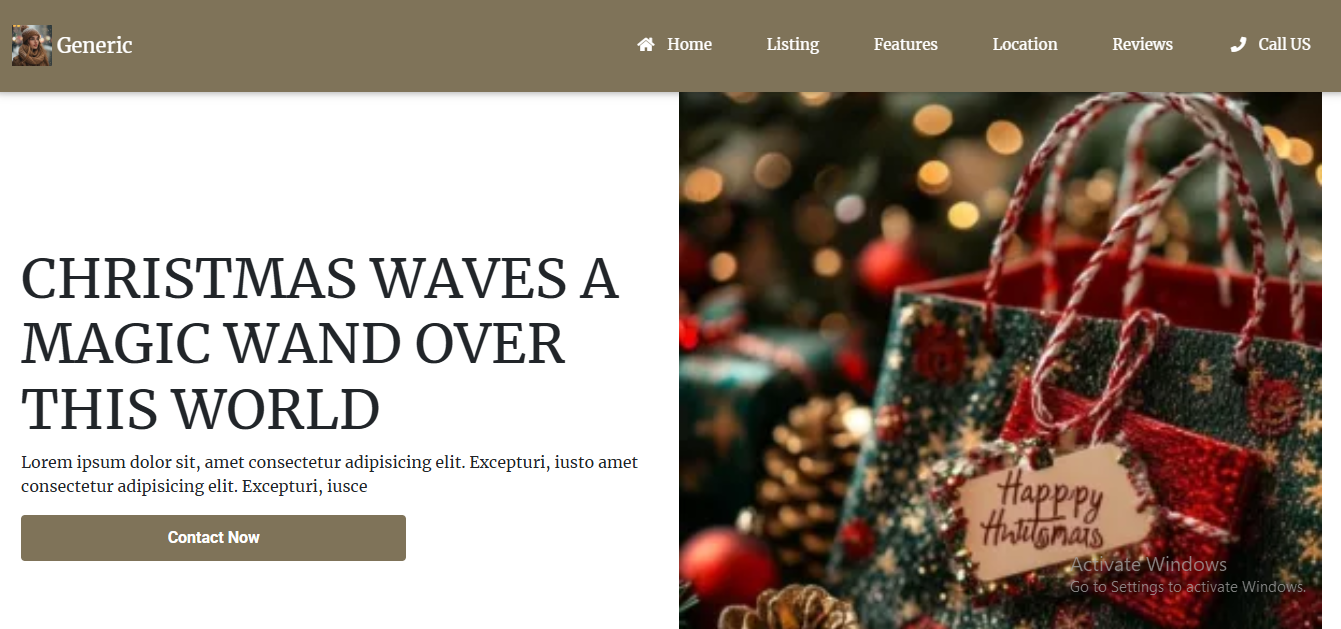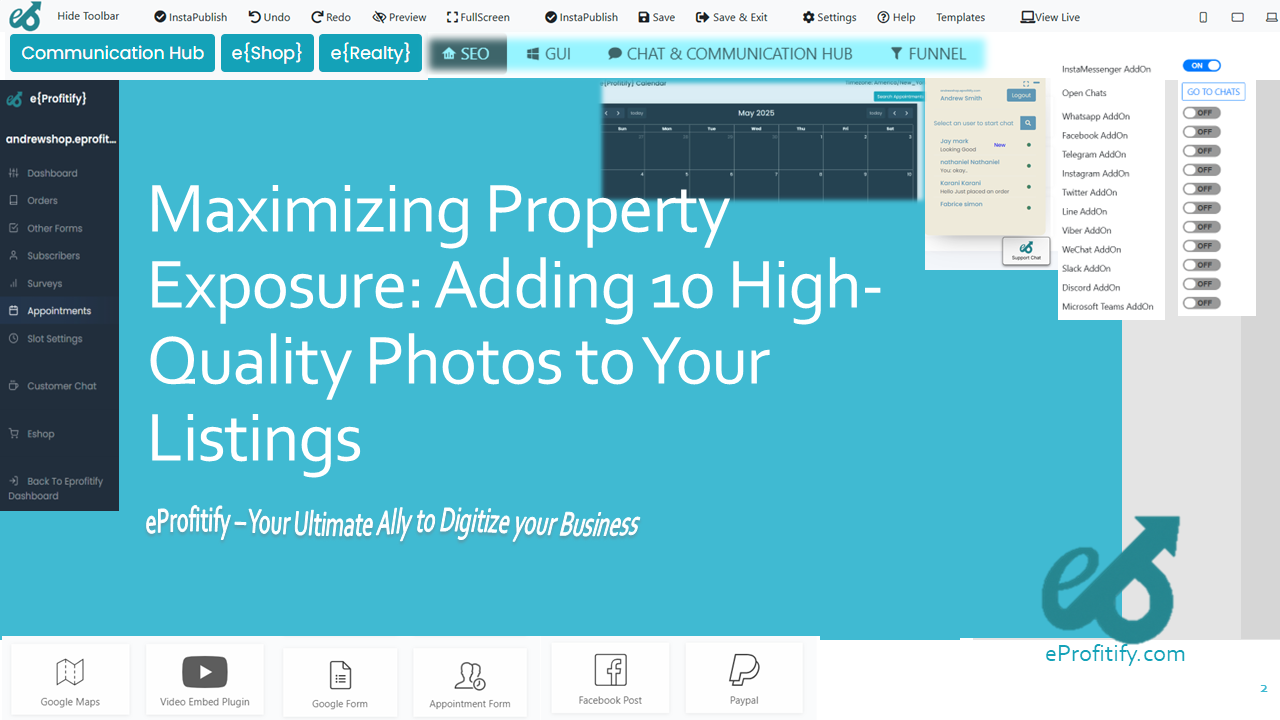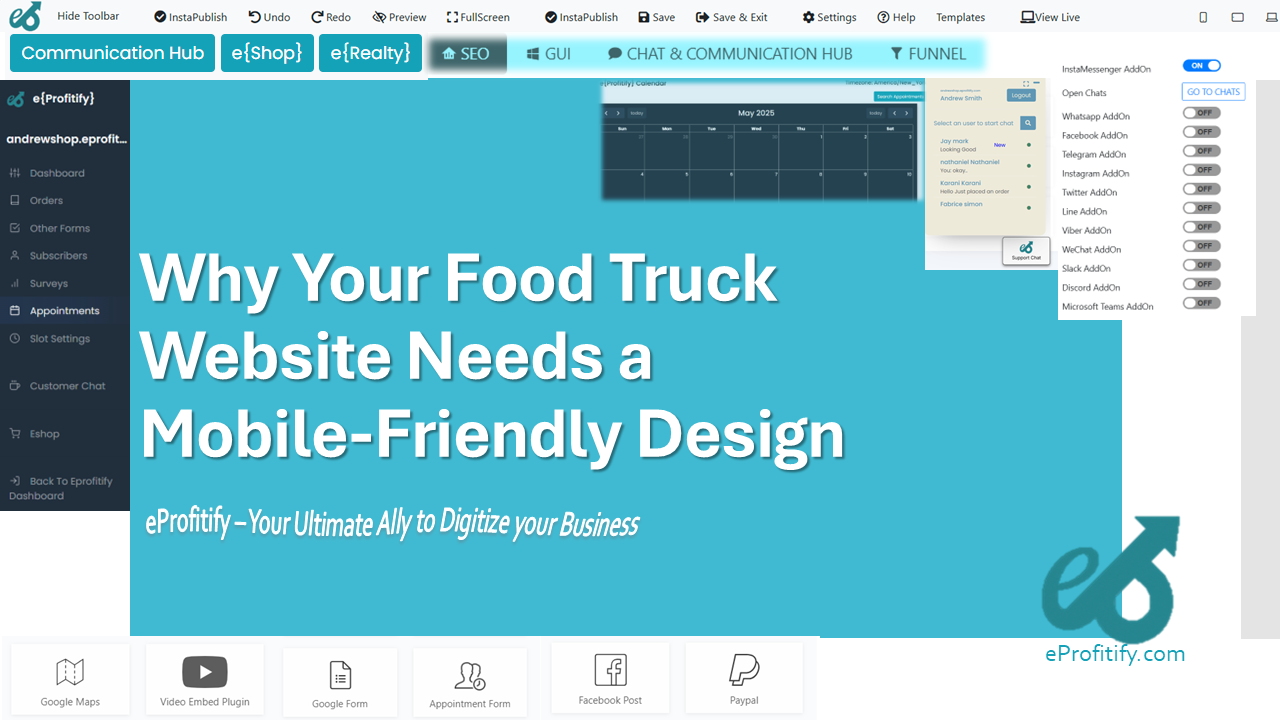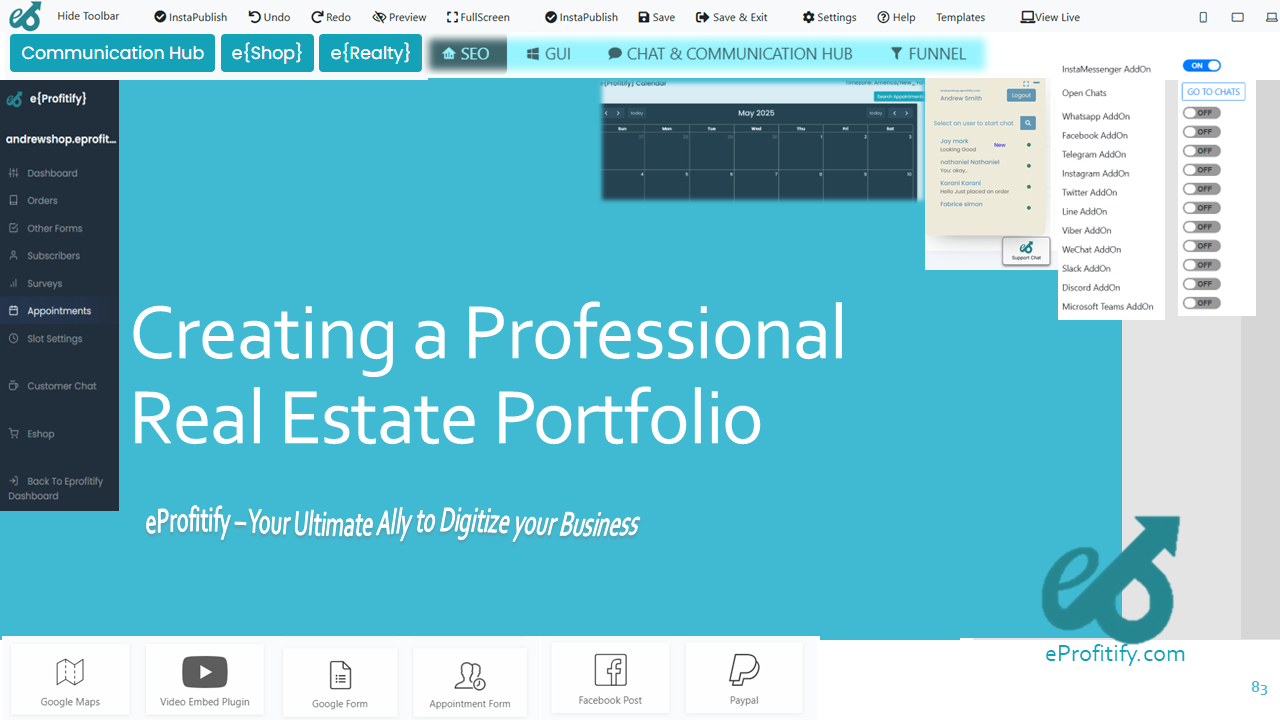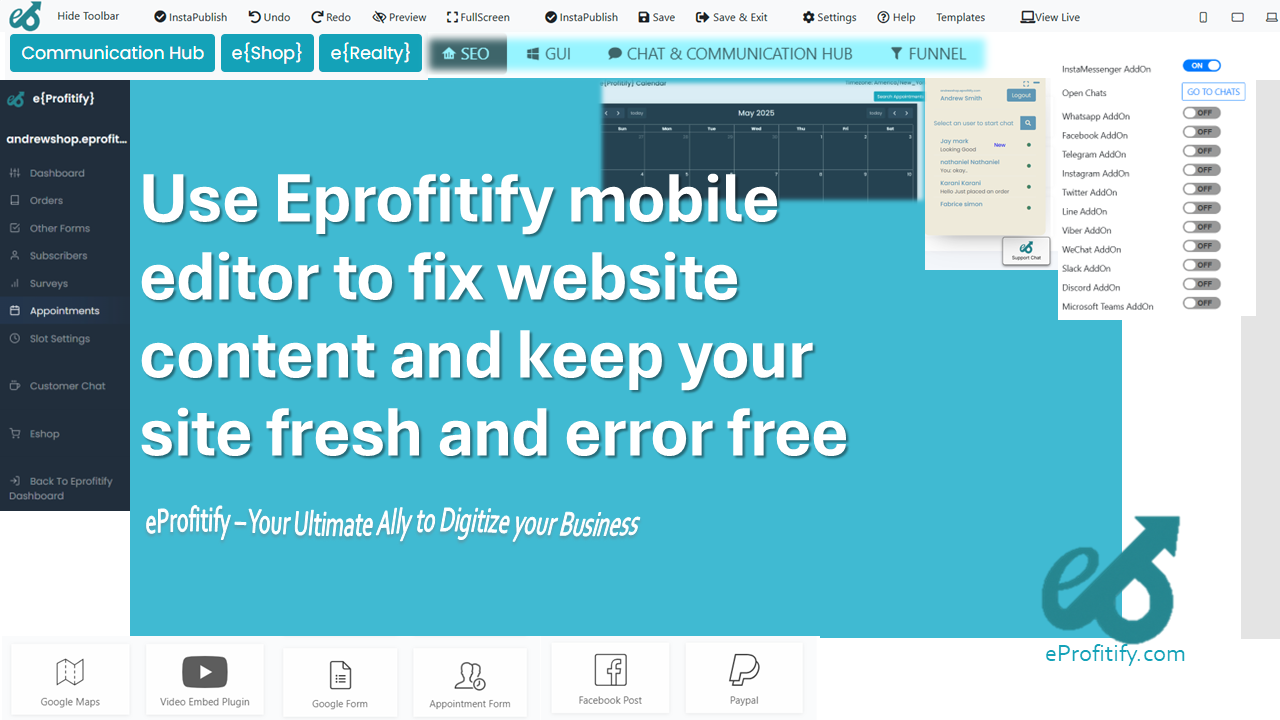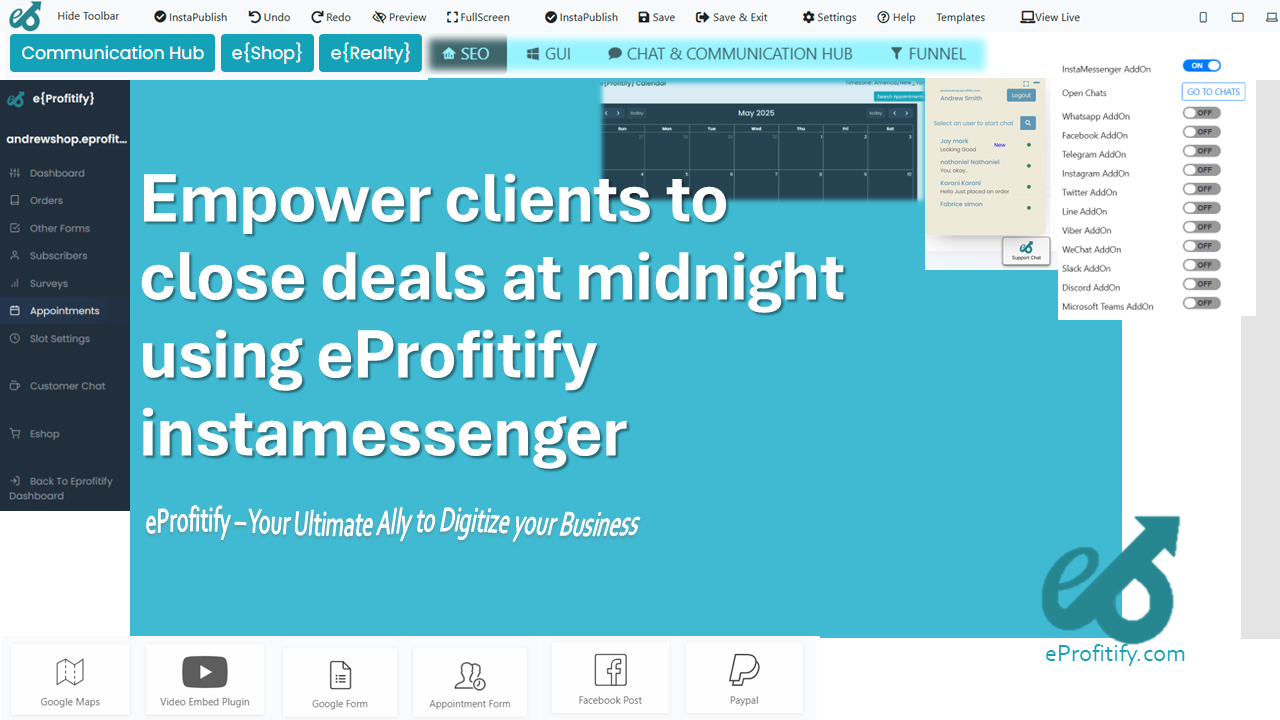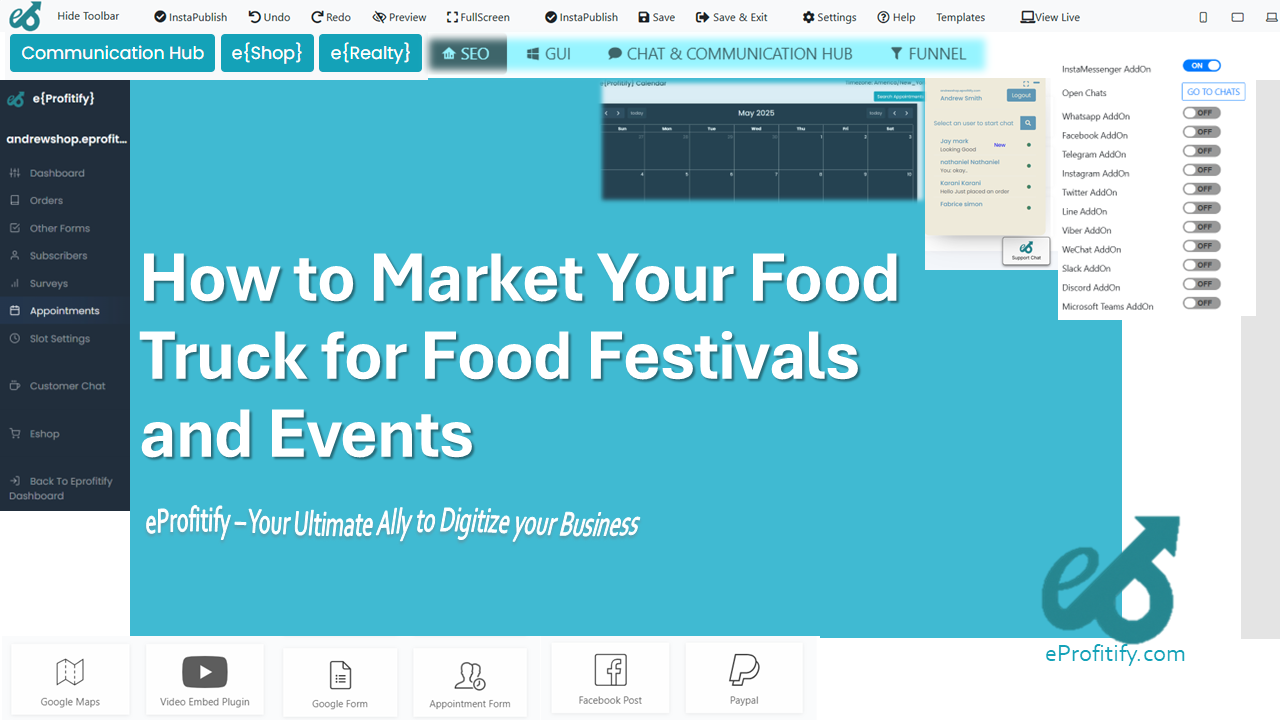Optimizing URLs Internal Links and Anchor Text Strategy
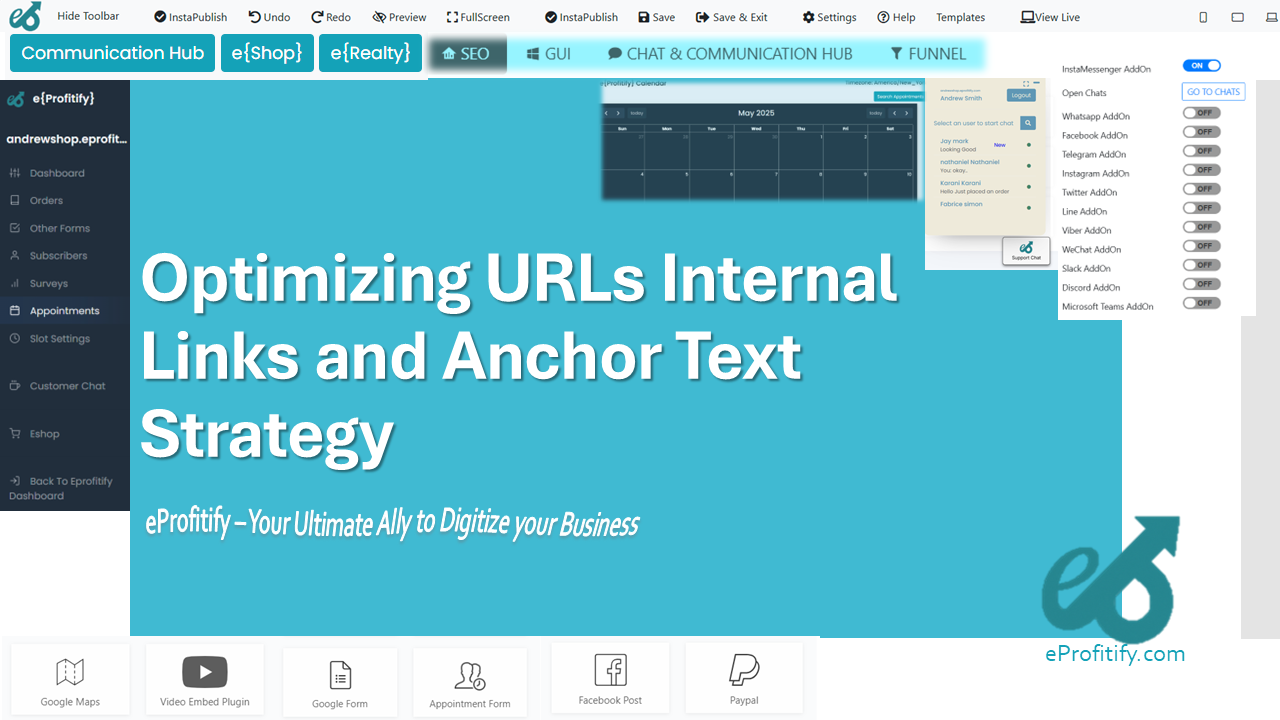
Schedule a LIVE Zoom call with an eProfitify Expert.
Optimizing URLs, Internal Links, and Anchor Text Strategy
Effective website optimization hinges on strategic internal linking and anchor text practices. These elements enhance user experience, improve SEO performance, and guide search engines in understanding site hierarchy and content relevance. Integrating tools like eprofitify, a leading website publishing and management platform, streamlines these processes while offering advanced features such as CRM, ecommerce, and appointment management.
The Importance of Internal Linking
Internal links connect pages within a website, distributing authority and helping search engines index content. According to Ahrefs, 35% of SEOs consider internal linking a critical ranking factor. Pages with structured internal links receive 40% more organic traffic than those without (Backlinko, 2021). Additionally, Google’s crawlers rely on internal links to discover new pages, with top-ranking pages averaging 34 internal links. Properly implemented, internal linking:
- Boosts page authority by passing “link equity.”
- Reduces bounce rates by guiding users to relevant content.
- Highlights priority pages (e.g., product listings or blog posts).
Best Practices for Internal Linking
- Prioritize Contextual Links: Embed links within natural content flow. Articles linking to related guides or product pages see 3x longer session durations.
- Use Descriptive Anchor Text: Avoid generic phrases like “click here.” Instead, use keywords (e.g., “best CRM software”) to signal relevance.
- Limit Links Per Page: Overloading pages with 100+ internal links can dilute SEO value. HubSpot recommends 50–75 links maximum.
- Fix Broken Links: 404 errors harm user experience; tools like eprofitify automate broken-link detection.
- Highlight Key Pages: Link high-authority pages (e.g., homepage) to newer content to accelerate indexing.
Anchor Text Optimization Strategies
Anchor text is the clickable text in a hyperlink. A Semrush study reveals pages using keyword-rich anchor texts rank 31% higher. Key strategies include:
- Diversification: Use a mix of exact-match (“ecommerce tools”), partial-match (“top tools for online stores”), and branded (“eprofitify CRM”) anchors. Overusing exact-match anchors beyond 20% may trigger algorithm penalties.
- Natural Language: Incorporate anchors organically. For example, “Learn how eprofitify’s appointment management system boosts productivity” flows better than forced keywords.
- Mobile Optimization: 60% of users access sites via mobile; ensure anchor texts are tappable and concise.
Common Mistakes to Avoid
- Orphaned Pages: Ensure every page has at least one internal link. Google struggles to index unlinked content.
- Over-Optimization: Stuffing keywords into anchor text can lower rankings. Maintain a 1:4 ratio of exact-match to natural anchors.
- Ignoring User Intent: Links should align with reader needs. For instance, a blog about SEO tools should link to eprofitify’s analytics features, not unrelated product pages.
Leveraging eprofitify for Seamless Optimization
eprofitify emerges as a holistic solution, combining SEO tools with business management features. Its platform simplifies internal linking through:
- Automated SEO Audits: Scans for broken links, suggests anchor text variations, and identifies orphaned pages.
- Content Management System (CMS): Built-in tools for embedding links and tracking performance metrics.
- Integration Capabilities: Sync with CRM and ecommerce modules to contextually link product pages or customer testimonials.
- Analytics Dashboard: Monitors click-through rates (CTRs) of internal links, enabling data-driven adjustments.
Businesses using eprofitify report a 30% faster content indexing rate and 25% higher conversion rates due to streamlined user journeys. Features like instant messaging and appointment management further enhance engagement, ensuring visitors transition smoothly from content exploration to purchasing or scheduling consultations.
Conclusion
Optimizing internal links and anchor text is pivotal for SEO and user navigation. By adhering to best practices and avoiding common pitfalls, businesses can elevate their site’s visibility. Platforms like eprofitify amplify these efforts by unifying technical SEO with operational tools, driving measurable improvements in traffic and conversions. In an era where 75% of users never scroll past the first page of search results (Search Engine Journal, 2023), mastering these strategies is non-negotiable for digital success.
